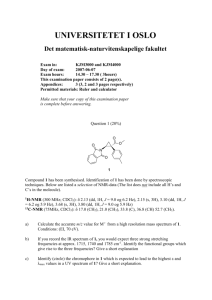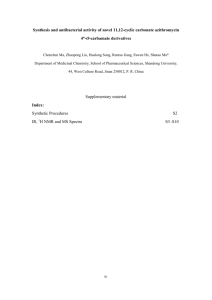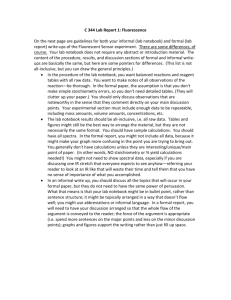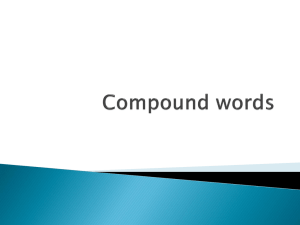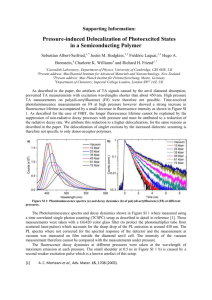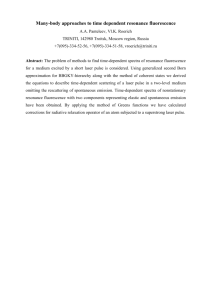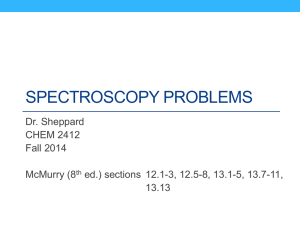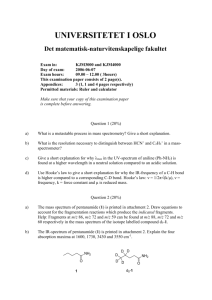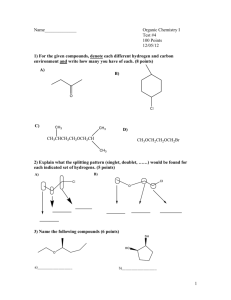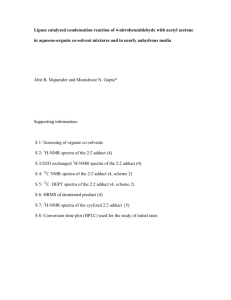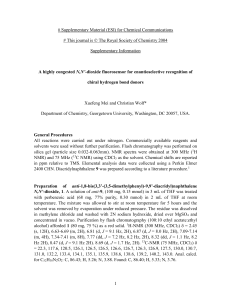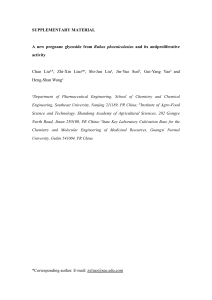Electronic Supplementary Information for Chemical Communications
advertisement
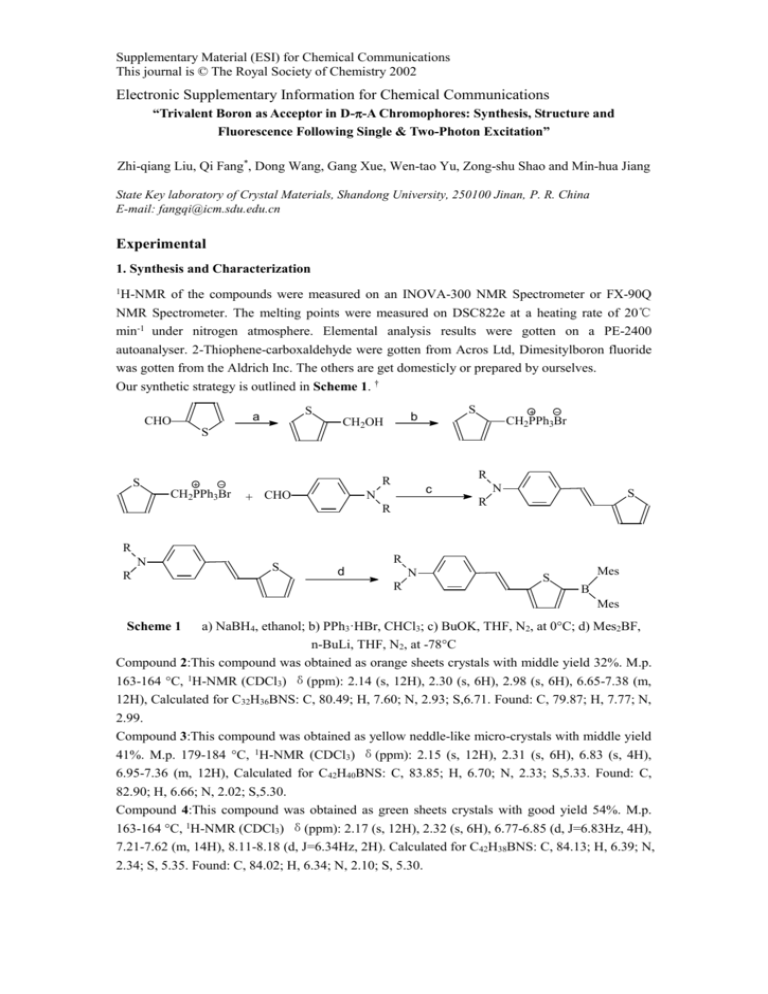
Supplementary Material (ESI) for Chemical Communications This journal is © The Royal Society of Chemistry 2002 Electronic Supplementary Information for Chemical Communications “Trivalent Boron as Acceptor in D--A Chromophores: Synthesis, Structure and Fluorescence Following Single & Two-Photon Excitation” Zhi-qiang Liu, Qi Fang*, Dong Wang, Gang Xue, Wen-tao Yu, Zong-shu Shao and Min-hua Jiang State Key laboratory of Crystal Materials, Shandong University, 250100 Jinan, P. R. China E-mail: fangqi@icm.sdu.edu.cn Experimental 1. Synthesis and Characterization 1H-NMR of the compounds were measured on an INOVA-300 NMR Spectrometer or FX-90Q NMR Spectrometer. The melting points were measured on DSC822e at a heating rate of 20℃ min-1 under nitrogen atmosphere. Elemental analysis results were gotten on a PE-2400 autoanalyser. 2-Thiophene-carboxaldehyde were gotten from Acros Ltd, Dimesitylboron fluoride was gotten from the Aldrich Inc. The others are get domesticly or prepared by ourselves. Our synthetic strategy is outlined in Scheme 1. † S a CHO S CH2PPh3Br + CHO CH2PPh3Br R R S S b CH2OH N c N S R R R N R S R d N R Mes S B Mes Scheme 1 a) NaBH4, ethanol; b) PPh3·HBr, CHCl3; c) BuOK, THF, N2, at 0C; d) Mes2BF, n-BuLi, THF, N2, at -78C Compound 2:This compound was obtained as orange sheets crystals with middle yield 32%. M.p. 163-164 C, 1H-NMR (CDCl3) δ(ppm): 2.14 (s, 12H), 2.30 (s, 6H), 2.98 (s, 6H), 6.65-7.38 (m, 12H), Calculated for C32H36BNS: C, 80.49; H, 7.60; N, 2.93; S,6.71. Found: C, 79.87; H, 7.77; N, 2.99. Compound 3:This compound was obtained as yellow neddle-like micro-crystals with middle yield 41%. M.p. 179-184 C, 1H-NMR (CDCl3) δ(ppm): 2.15 (s, 12H), 2.31 (s, 6H), 6.83 (s, 4H), 6.95-7.36 (m, 12H), Calculated for C42H40BNS: C, 83.85; H, 6.70; N, 2.33; S,5.33. Found: C, 82.90; H, 6.66; N, 2.02; S,5.30. Compound 4:This compound was obtained as green sheets crystals with good yield 54%. M.p. 163-164 C, 1H-NMR (CDCl3) δ(ppm): 2.17 (s, 12H), 2.32 (s, 6H), 6.77-6.85 (d, J=6.83Hz, 4H), 7.21-7.62 (m, 14H), 8.11-8.18 (d, J=6.34Hz, 2H). Calculated for C42H38BNS: C, 84.13; H, 6.39; N, 2.34; S, 5.35. Found: C, 84.02; H, 6.34; N, 2.10; S, 5.30. Supplementary Material (ESI) for Chemical Communications This journal is © The Royal Society of Chemistry 2002 † The intermediate substances via reaction c (Supplement) are partially described in the following references: Wang, S.-L.; Ho, T.-I. J. Photochem. Photobio, A: Chemistry (2000), 135(2-3), 119-126. Sun, Sam-Shajing; Zhang, Cheng; Yang, Zhixin; Dalton, Larry R.; Garner, Sean M.; Chen, Antao; Steier, William H. Polymer (1998), 39(20), 4977-4981. 2. The setup for measurement of the photophysical properties All the solvents used for absorption and fluorescence measurements were spectroscopic grade. For diluted solutions C=1×10-5 mol/l, in quartz cuvettes of 1 cm path length, linear absorption spectra were recorded on a Hitachi U-3500 UV-VIS-IR spectrophoto-meter. Steady state and time-resolved fluorescence spectra for all compounds were measured on a Edinburgh FLS920 fluorescence spectrometer equipped with a 450 W Xe lamp and a time correlated single photon counting (TCSPC) at the identical condition. All the fluorescence spectra present here are corrected. Reconvolution fit analysis of the decay profiles were made with F900 analysis software to get the lifetime value. The fitting results are judged for every decay by “reduced chi-square”. The two-photon excitation spectra and two-photon excited fluorescence spectra were measured with a Coherent Mira 900 femtosecond Ti:sapphire laser as pump source and with a streak camera (Hamamatsu, model: C5680) in conjunction with an imaging spectrography (Hamamatsu, model: C5094) as resorder. The input laser power we used is 0.08 w to avoid the saturation. The pulse width and repetition rate of the laser are 200fs and 76 MHz respectively.
